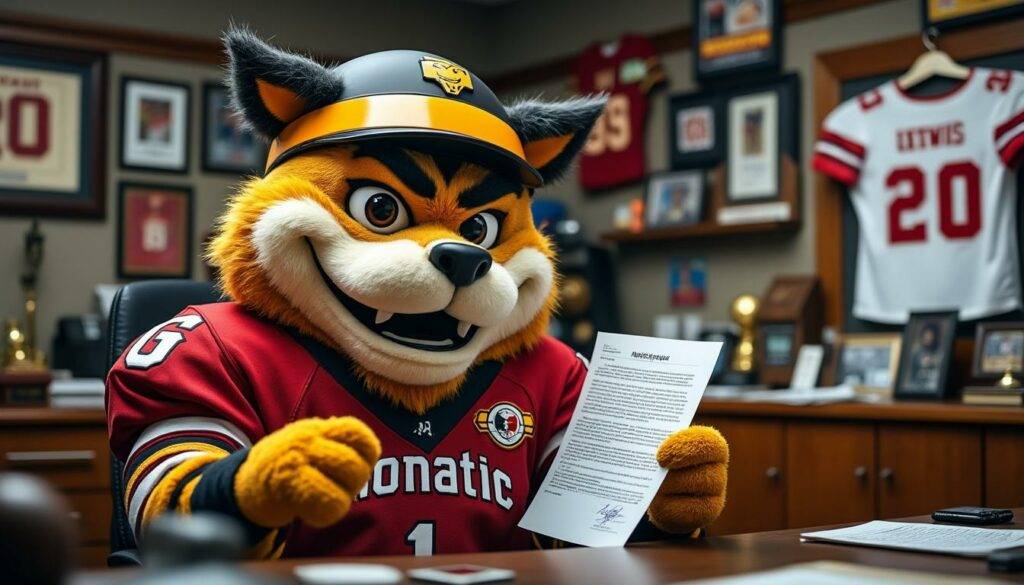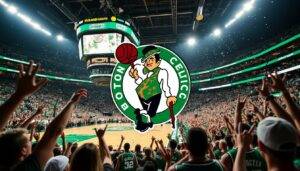former Nuggets mascot files lawsuit against team for wrongful termination and discrimination following hip surgery

As of 2025, a high-profile case in the NBA spotlight is testing how sports franchises handle workplace injuries, disability protections, and the role of mascot identity in team branding. Drake Solomon, who wore Rocky for three seasons with the Denver Nuggets, has filed a lawsuit against Kroenke Sports & Entertainment, alleging wrongful termination and disability-based discrimination after a serious hip injury. The dispute touches on sports law, athlete rights, and the delicate balance between performance culture and fair employment practices within big franchises.
- Plaintiff Drake Solomon, known to fans as Rocky, alleges a hostile work environment and discriminatory treatment following his avascular necrosis diagnosis and hip surgery.
- The case centers on termination timing and severance terms after Solomon took time to recover from surgery.
- Parallels are drawn to broader questions about how teams manage injury, health, and branding when a longtime performer is part of a franchise’s public face.
Denver Nuggets Mascot Lawsuit Highlights: Wrongful Termination and Disability Discrimination
Solomon claims the Nuggets violated state protections, specifically Colorado anti-discrimination statutes, by terminating him after he sustained a hip injury and underwent surgery. The suit argues the team pursued a branding-driven approach that overlooked disability protections and offered a severance package that mirrored what others received, suggesting a potential bias in treatment for the mascot tied to health issues.
- Key players: Drake Solomon (Rocky), Kroenke Sports & Entertainment, and the Nuggets’ management structure.
- Core allegations: unlawful termination tied to disability, retaliation after returning from surgery, and a hostile workplace environment.
- Intersections with law: Colorado Anti-Discrimination Act and potential class-action considerations if other employees were similarly affected.
The case is shaping a broader dialogue about how teams treat performers who suffer workplace injuries. It also raises questions about whether mascots are shielded by the same workplace rights as other athletes, or if branding requirements create a separate standard for entertainers working in high-pressure environments.
The Legal Basis and Claims in Focus
- Discrimination claims under state law point to disability protections and the timing of termination after a medical procedure.
- Wrongful termination arguments challenge the rationale used for firing, especially when linked to a recovery period and health status.
- Potential class-action implications depend on whether other employees faced similar severance practices tied to health-related absences.
Solomon alleges the organization informed him of mascot tryouts during his absence due to health concerns, signaling a punitive tone linked to his impairment. The lawsuit also claims the severance package offered to him was not unique and mirrored terms given to other staff, suggesting a potential pattern rather than an isolated decision.
Legal Dimensions in 2025: Sports Law, Disability Protections, and Team Management
The dispute sits at the crossroads of sports law, athlete rights, and the management practices of high-profile teams. As the NBA continues to emphasize brand integrity and player safety, this case could influence how teams document injury timelines, communicate with performers, and structure compensation when health issues arise.
- Regulatory context: state-level disability protections and their application to non-player entertainment staff.
- Workplace injury considerations: how injuries are documented, communicated, and acted upon in performance roles.
- Industry impact: potential changes to mascot employment policies and more standardized severance practices across clubs.
Analysts note that the Nuggets’ handling of Solomon’s case could influence how team management navigates the line between keeping a strong brand identity and honoring athlete rights. For fans, the case adds a new layer to discussions about how much credit a mascot earns for team success and how much accountability a franchise owes when a performer is sidelined by injury.
Impact on Team Management and Athlete Rights: What This Means for the NBA and Mascots
The lawsuit invites a broader reckoning around how franchises treat performers who step into iconic roles. If courts side with Solomon, it could push teams to adopt clearer injury timelines, more transparent communications, and fairer severance practices—balancing branding needs with genuine care for employee welfare.
- Employee rights: clarity on protections for non-player performers with health issues.
- Team operations: how branding decisions interact with legal obligations toward workers.
- Industry signals: potential shifts in how teams document, justify, and compensate for disability-related absences.
FAQ
What are the main claims Drake Solomon asserts in the Rocky mascot lawsuit?
Solomon argues wrongful termination based on disability and a hostile work environment, asserting Colorado anti-discrimination protections were violated after his hip surgery and return to work. He also questions the fairness of the severance package and alleges retaliation linked to his health status.
- Disability discrimination under state law
- Wrongful termination tied to health condition
- Hostile work environment and retaliation allegations
Could this case lead to a class-action or broader implications for other employees?
Yes. Solomon’s filing could open the door to a class-action approach if evidence shows a pattern of discriminatory or unfair severance practices affecting multiple employees, especially those undergoing injury recovery or disability accommodations.
- Potential class-action fallout depends on evidence of similar treatment
- Impact on team HR policies and mascot programs across the league
- Precedent for how athletic organizations handle injury-related employment decisions
How does the Colorado Anti-Discrimination Act factor into the case?
The Colorado Anti-Discrimination Act provides the statutory framework for disability protections in the state. The lawsuit argues the Nuggets violated these protections by terminating Solomon due to his impairment and by pursuing what Soloman describes as unfair treatment during recovery and return.
- Legal standard: protection against disability-based employment discrimination
- Claims hinge on health status, treatment decisions, and timing of termination
- Potential remedies could include damages and reinstatement considerations
What are the potential outcomes for Drake Solomon, the Nuggets, and the NBA’s mascot programs?
Outcomes range from an out-of-court settlement to a court ruling that sets a broader standard for mascot employment and disability accommodations. Regardless of resolution, the case could influence how teams document injury timelines, communicate with performers, and structure severance packages in the future.
- Possible settlements and revised mascot employment policies
- Updated internal guidelines on injury recovery and branding responsibilities
- Increased attention to athlete rights and workplace protections across the NBA

